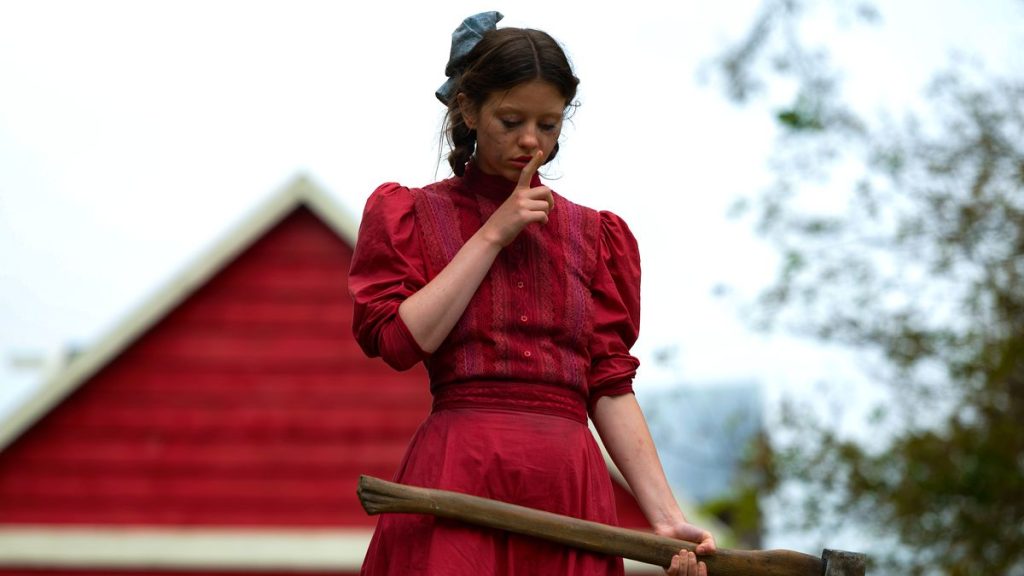Frances Walton ’26
Copy Editor Intern
From TikTok to Letterboxed, Pearl is heralded as the female Joker, giving unhinged women the spotlight next to men.
All of the features required of the unhinged genre are there: a complex character, misunderstood by society, unable to adapt to everyday life. However, the film gives Pearl’s character a more complex, relatable, and terrifying background than the Joker. Additionally, Pearl is an impressively crafted film, making it a joy to watch despite its gory subject. It is the perfect Halloween horror film for angsty 5C students.
Pearl, set in 1918, follows the titular character, Pearl (Mia Goth), a young farm girl with an overbearing mother (Tandi Wright), a disabled father (Matthew Sunderland), and a deployed husband (Alistair Sewell). Opening the film, Pearl goes about her day, doing chores and talking to the farm animals, but when she carelessly stabs a goose and feeds them to the alligator on their farm without remorse, the realization that Pearl isn’t quite normal strikes audience members.
Following this jarring opening scene, we soon learn that Pearl’s ultimate dream is to be a famous dancer and escape the dismal farm life she knows. However, this seems impossible as her devout Christain mother demands more and more labor from Pearl. All the while, their family and the world are coping with a pandemic (relatable, I know) and World War I. Shaped by these personal and societal struggles, Pearl follows a heinous path to her future.
Pearl touches on many important themes that relate to 5C student struggles, including a pandemic, a war, mommy issues, religion, repression, and womanhood, among many others. What makes this film so extraordinary is the line Pearl toes between a horror villain and a young woman with whom we identify. The film expertly shows Pearl’s duality: she’s relatable yet evil, forcing the audience to contend with their commonalities with Pearl and their distaste for Pearl’s feelings of selfishness and isolation.
In a technical sense, Pearl stands out as a phenomenal horror film, aligning stylistically with the likes of Midsommar and Suspiria. In Pearl, the cinematography is an ode to the technicolor world of the Wizard of Oz, lending the movie a sense of lush color where most horror movies lurk in the dark. Most terrifying shots happen in the light of day, contributing to the film’s unsettling vibe. The bright look of Pearl is accompanied by exceptional costuming, set design, and music, adding to the atmosphere and interacting effortlessly with the film. Pearl is often highlighted amongst the other characters, wearing a bright red dress or donning a top hat, separating her from the rest of the world.
Even more impressively, Pearl is director Ti West’s second movie in 2022. As the prequel to X, Pearl again shows how Ti West brings a unique and fresh vision to the horror genre, which is often bogged down by carbon-copy, gore-filled movies. Pearl was filmed simultaneously with X, but it was kept a secret until the teaser trailer at the end of X. But don’t let the fact that Pearl is a prelude dissuade you from watching. It stands on its own as phenomenal, and it does not require one to have watched X.
However, one aspect of the film emerges above the rest — Mia Goth. Goth is a relatively fresh face to Hollywood, yet her performance in Pearl is legitimately groundbreaking. Many of her lines, which would sound cliche and kitschy delivered by anyone else, pack a serious punch. Goth perfected her character, pinning down her facial expressions and mannerisms to a T. If I saw her on the street, I would probably walk the other way (as a compliment to her acting skills). Not to mention, Goth delivers a monologue to rival Gone Girl or Hereditary, chilling audience members to the bone.
From the intriguing themes to the excellent craftsmanship, Pearl is a chill-inducing movie featuring an unhinged protagonist that I recommend to anyone in a Halloween mood. As a young adult, Pearl has even greater resonance as it forces the audience to confront themselves with an oft-considered question: how far would you go for acceptance and love?
Image Source: Polygon



